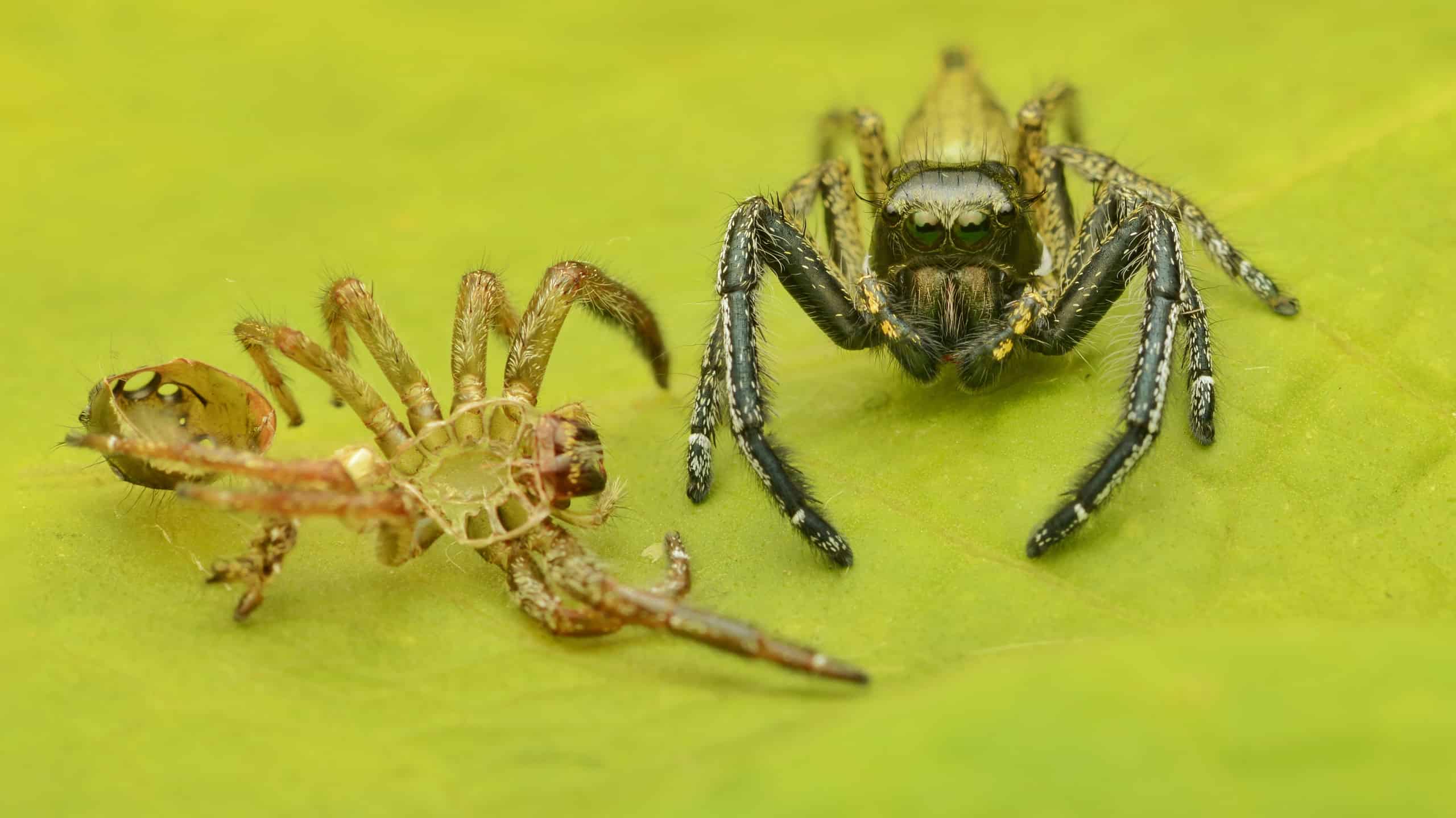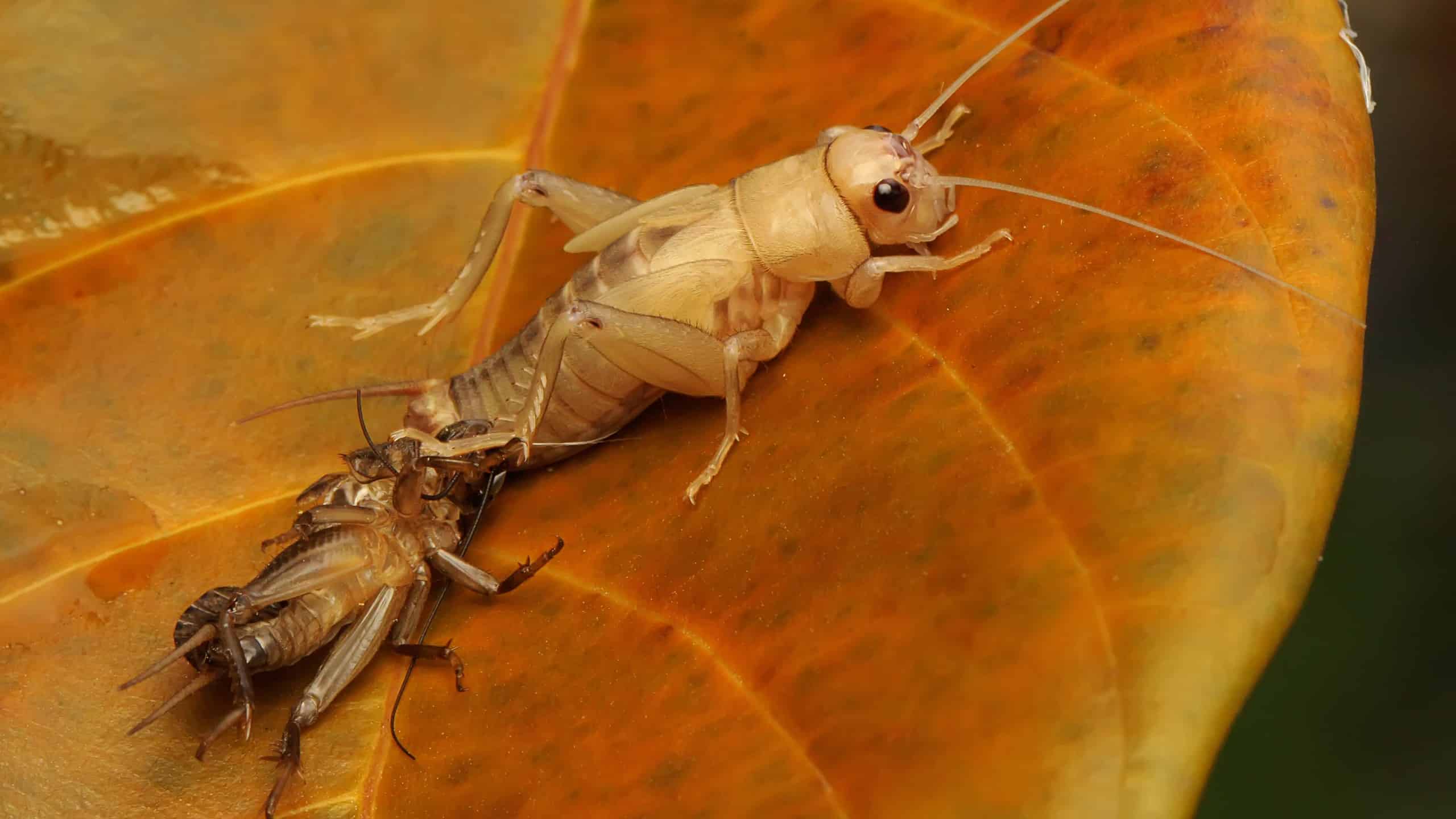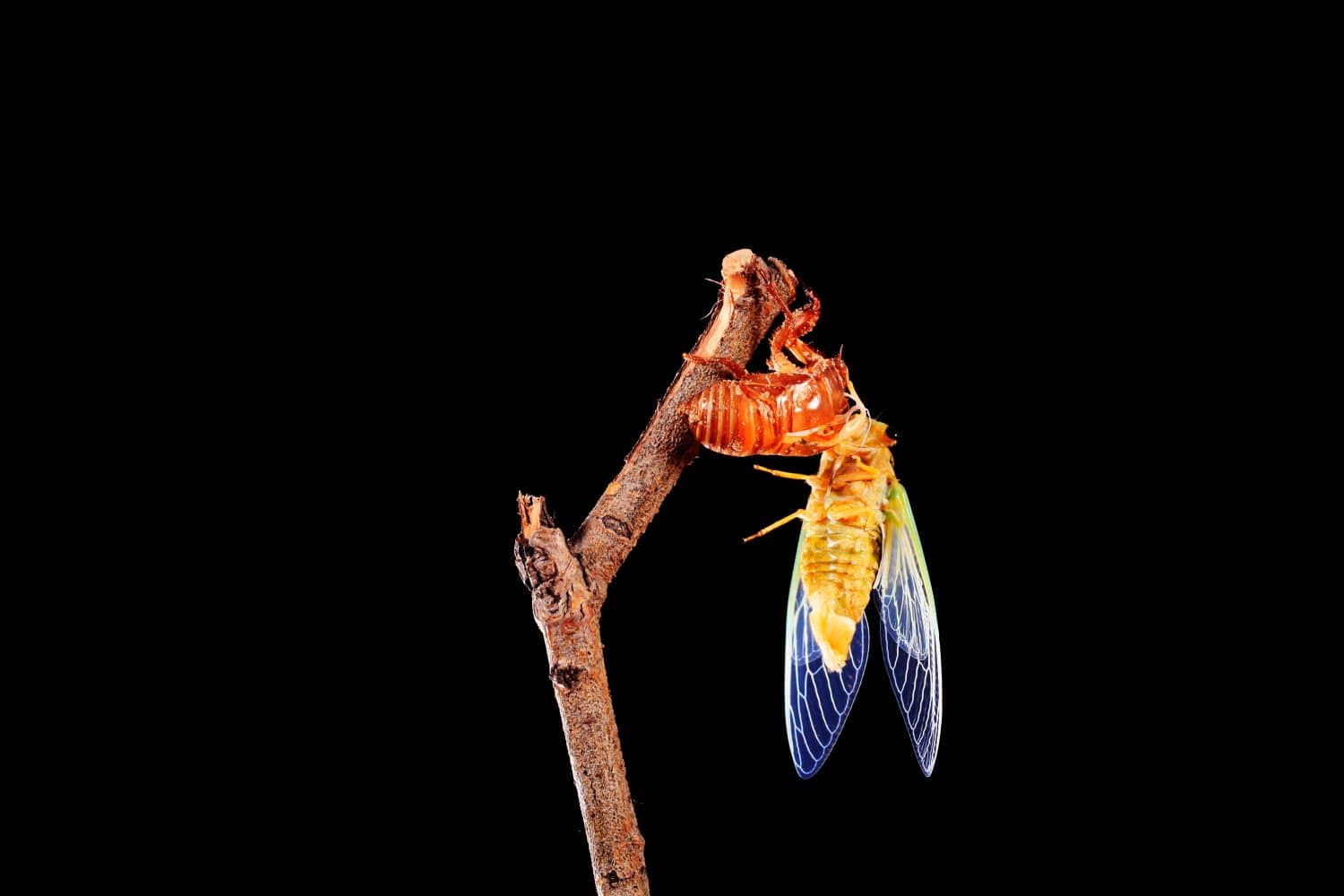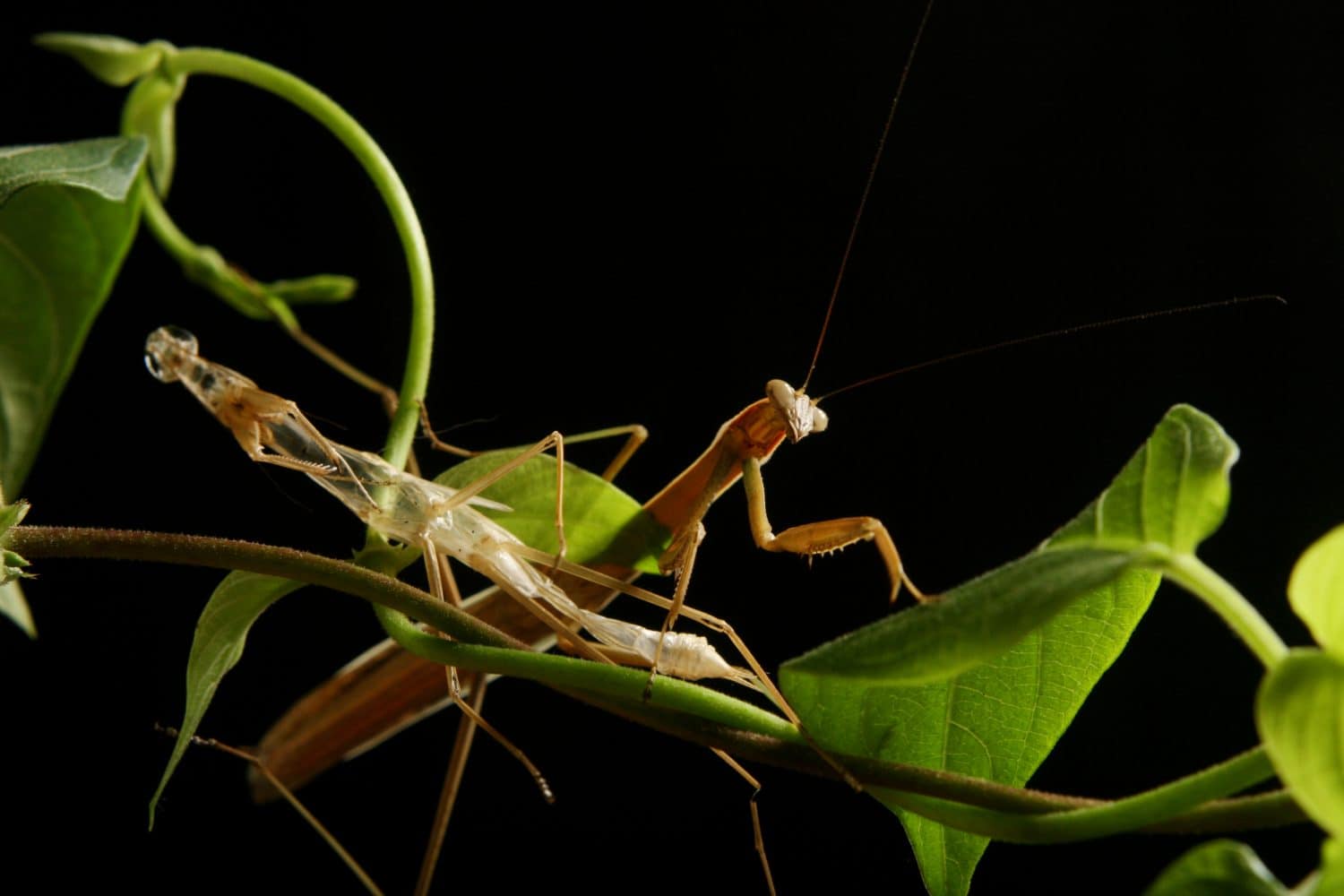
Caterpillars shed their skin several times as they grow, and in the final stage of
metamorphosis
, they form their pupa (chrysalis). As the warm summer and spring suns arrives, it signals a change in the pupa, allowing the adult butterfly to emerge. This shedding process, or ecdysis, is when an animal sheds an outer layer of skin, shell, or exoskeleton. Also known as molting, spiders, crabs, and snakes experience ecdysis, as do many other organisms.
The word ecdysis originates from the Greek meaning “to strip off”. During ecdysis, the stiff outer layer (called cuticle or exoskeleton) is removed, allowing the animal to continue growing. This crinkled relic of its old skin is usually consumed or left to show the cycle of renewal and growth in the animal kingdom.

Animals That Undergo Ecdysis
Molting, or ecdysis, is an activity that happens for many animals, each with their twist on the process. (
Watch a video of an insect molting here).
For example, a caterpillar sheds its skin several times as it gets larger. Crickets, cockroaches, and cicadas shed many times to reach adulthood. Often, one can see the brown, papery exoskeleton of a cicada nymph stuck on tree bark, with the adult missing. Arachnids, including spiders, must also shed.
Here is a list of a few animals that undergo ecdysis and how some of them do it:

-
Arthropods (crustaceans, spiders, and insects)
- Tarantulas wiggle out of their old exoskeleton, emerging softer and lighter in color
- Crabs back out of their hard shell, leaving a full copy of themselves as a hollow shell
-
Reptiles (snakes, lizards)
- Snakes slide out of their skin like a hand slipping from a glove
- Lizards typically shed in flaky patches (sometimes eating the shed as they go)
From a dragonfly coming out of its watery nymph shell to a snake shedding its skin, ecdysis is a common and natural part of life in the animal kingdom.
A Vital Cycle

As a matter of fact, ecdysis is a typical and required phase of the life cycle for animals that undergo it. This is not an abnormal event, but a built-in method for development and renewal. In species with hard exoskeletons or scales, outer layers do not get bigger as their inner body grows. For example, a young insect or crab before molting could be compared to a child in shoes that are too tight. The single solution is to shed the restrictions and form new, bigger ones.
Molting happens at intervals throughout development so the animal can become larger (like in crabs) or change form (caterpillars to butterflies). The developmental stages of insects are instars, separated by each molt. A caterpillar may molt multiple times before it becomes a pupa, and at each stage, it becomes larger. The final time it sheds, it can change form. In other words, changing from a crawling larva into a winged adult. If an insect does not complete a molt, it usually does not progress to the next stage. This highlights how vital this process is to successful development.

In addition, reptiles also shed as part of their typical development. A healthy snake will shed its skin regularly throughout its life. Juveniles shed more frequently, often every few weeks to a couple of months, while adults shed a few times a year as their growth rate slows down. Notably, every shed allows room for new development. Snakes also use shedding to replace worn or damaged skin and even to help remove parasites. Lizards shed regularly in patches once they outgrow their old scales, often ingesting these pieces to recover nutrients.
In crustaceans, molting and development are linked. A young crab or lobster will molt frequently and become larger each time. In this case, as with many other animals that go through molting, they are unable to grow continuously and require the shedding of skin to continue developing.
Moreover, the molting process requires accurate timing. Many animals have hormonal signals that cue the molting process when the time is right. In this way, ecdysis is a part of their development, ensuring it occurs at the right moment — a natural rhythm or cycle in casting the old to make way for the new.
Molting Presents Benefits And Challenges
As discussed earlier, there are clear advantages to molting, including growth and development. Also, the shed skin provides nutrients to the animal and to the ecosystem through nutrient cycling. However, there are also disadvantages to this vital process.

The major drawbacks of ecdysis are that shedding the outer layer does not come without risk. The moment an animal discards its protection,
it enters a dangerous period
. The new skin or soft outer covering is usually sensitive and not strong. Until it gets hard (which can take days), the creature is as breakable as a newborn.
During this time, the organism is much more open to predators, water loss, and harm. Many animals, like crabs, naturally hide during molting. For example, hermit crabs can bury themselves for weeks during a molt.
In addition, the action of shedding itself is physically demanding and complex. Splitting open an old shell and crawling out is like escaping a tight outfit. If there are problems that arise in the molting process, the animal can be caught halfway and suffer. Or, if an animal is sick or lacks nutrition, it might not molt properly.
From snakes to elk, each creatures molt has its own dangers and qualities. The discarded skin of a snake is a record of growth. An insects shed is the last remnant of their juvenile stage. In the animal kingdom ecdysis happens frequently, enabling creatures to keep living and testify to the resilience and renewal told in nature’s story.
Follow A-Z Animals!
-
See today’s latest and most exciting animal news when you follow A-Z Animals.
Click here to access the A-Z Animals profile page
and be sure to hit the
Follow
button here or at the top of this article! - Have feedback? Add a comment below!
Up Next:
- Why Did Some Dinosaurs Go Extinct Before the Asteroid?
- Discover 6 Incredible Paleozoic Era Animals
- 10 Animals That Give Birth and Then Die
The post
Ecdysis, Defined: An Incredible Period of Transformation
appeared first on
A-Z Animals
.